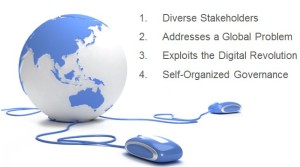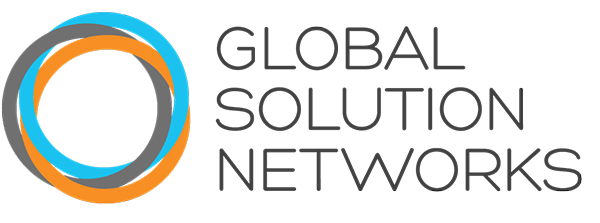Applying the New Multi-Stakeholder Model for Global Cooperation and Problem Solving
There is a fundamental change underway in how we govern ourselves on this shrinking planet. Emerging networks of civil society organizations, private companies, governments and individuals are coming together in powerful new ways, enabled by digital technology, to achieve new forms of social innovation – advocating for and delivering solutions for global problems. Enabled by the digital revolution, multi-stakeholder, self-governing networks are transforming how we solve global problems.
 These multi-stakeholder global solution networks (GSNs) address every major issue facing humanity from poverty, human rights, sustainability, financial inclusion and youth unemployment to the governance of the Internet itself. GSNs advocate for inclusion of the disabled, develop emission standards, deliver education and knowledge and monitor ecosystem abuses. What was lacking until now is a language for describing these diverse networks and an understanding of their combined potential for improving the world. In three years of research we identified and studied 10 network types, what makes them tick and the challenges they face.
These multi-stakeholder global solution networks (GSNs) address every major issue facing humanity from poverty, human rights, sustainability, financial inclusion and youth unemployment to the governance of the Internet itself. GSNs advocate for inclusion of the disabled, develop emission standards, deliver education and knowledge and monitor ecosystem abuses. What was lacking until now is a language for describing these diverse networks and an understanding of their combined potential for improving the world. In three years of research we identified and studied 10 network types, what makes them tick and the challenges they face.Global Solution Networks is now the definitive resource of expert insights, cases and field tools for global problem solvers. As we move from the theory to the application of GSNs, we offer learning tools, workshops and even a Field Guide for action. With these tools, network leaders can build or scale GSNs while they connect to fellow problem solvers around the world. Our issue-based hubs span climate and planet stewardship, health and human security, employment and prosperity, and cities. On each hub expert curators invite nominations of successful GSNs to help grow a comprehensive network of GSN networks.

